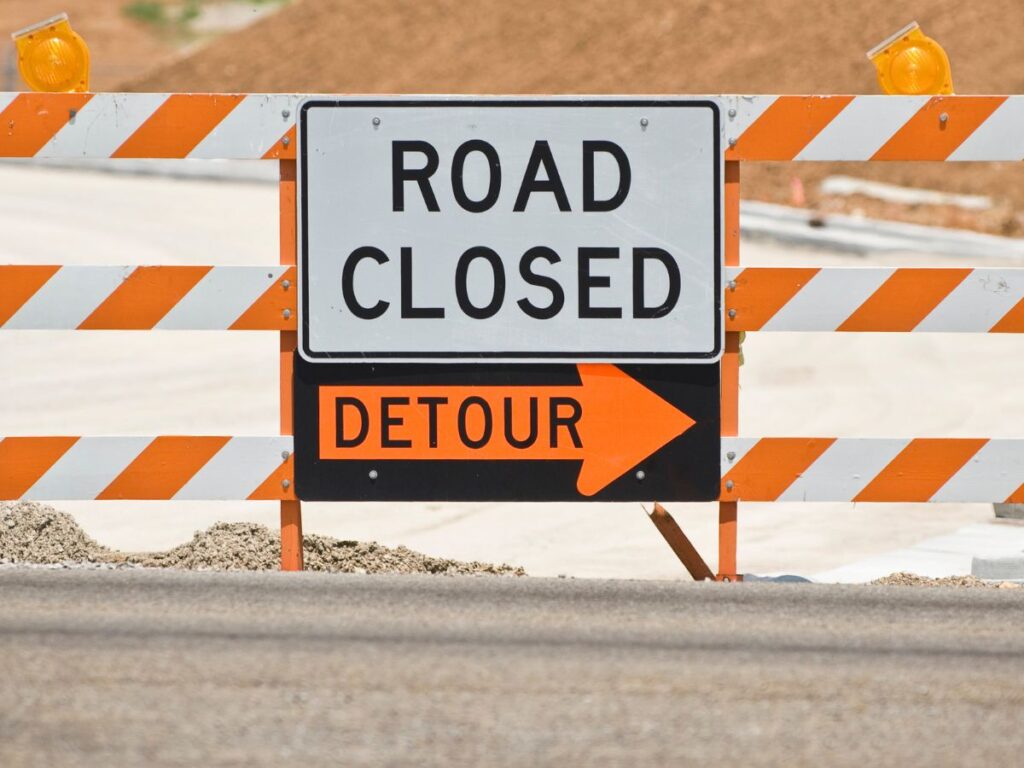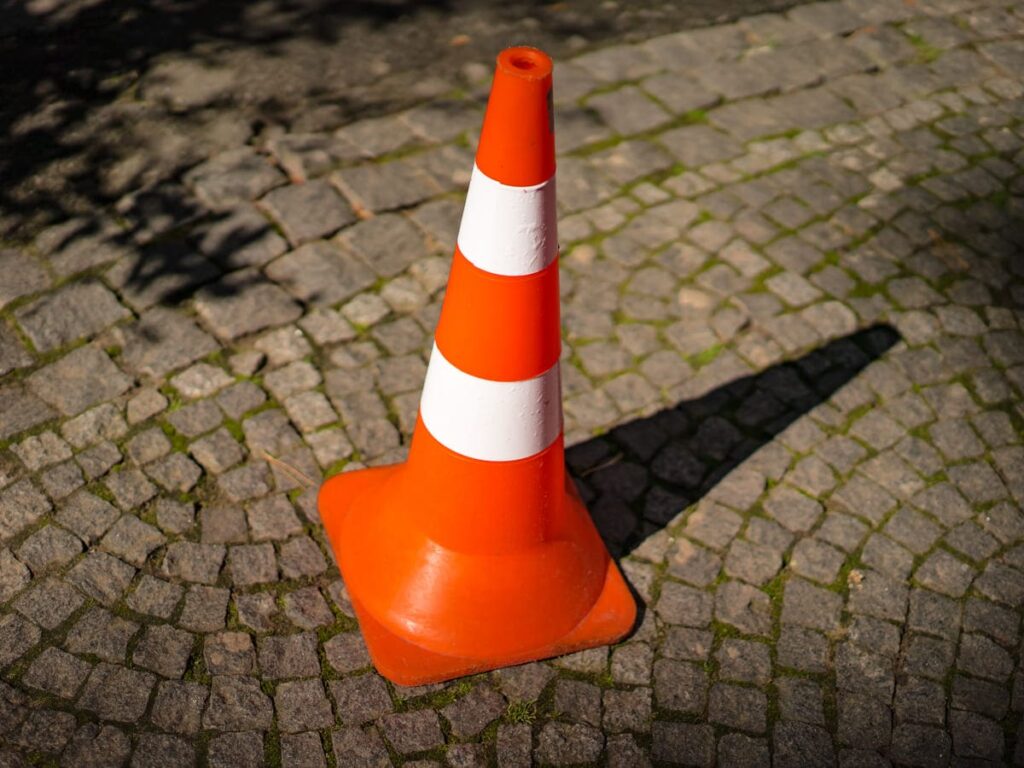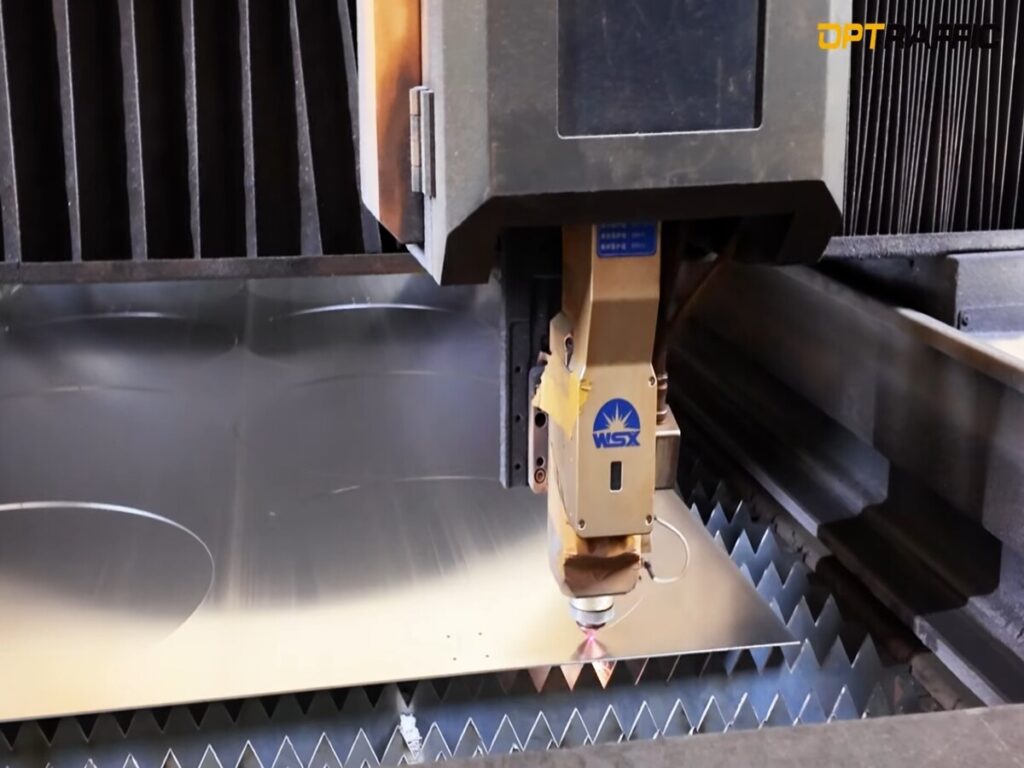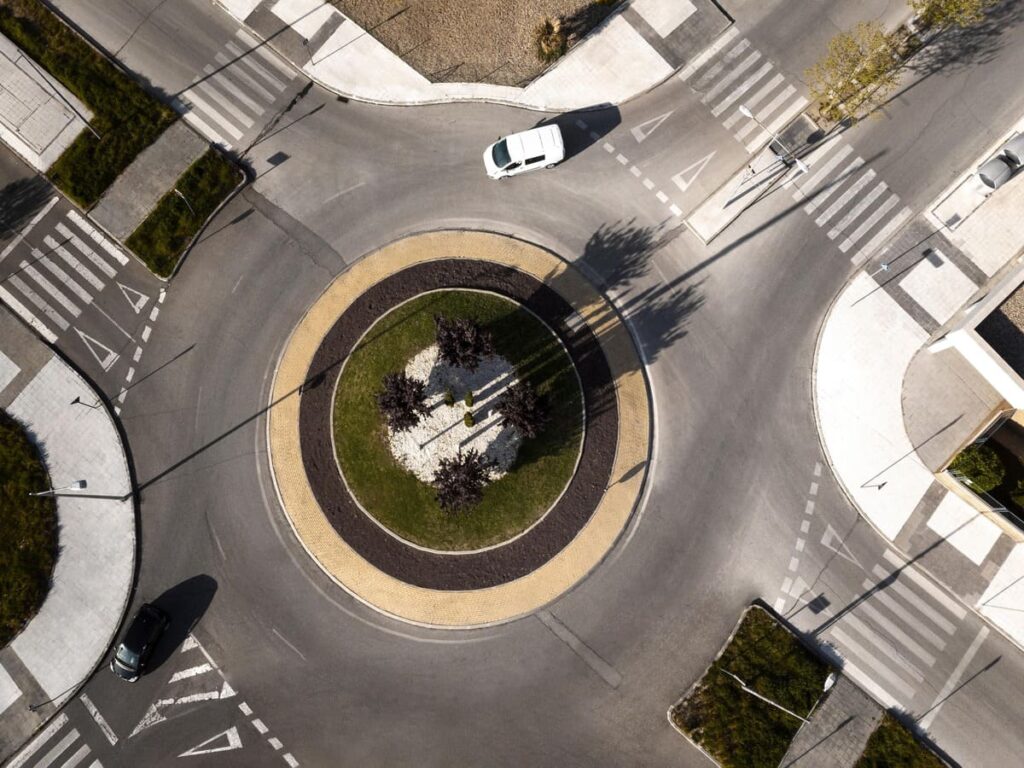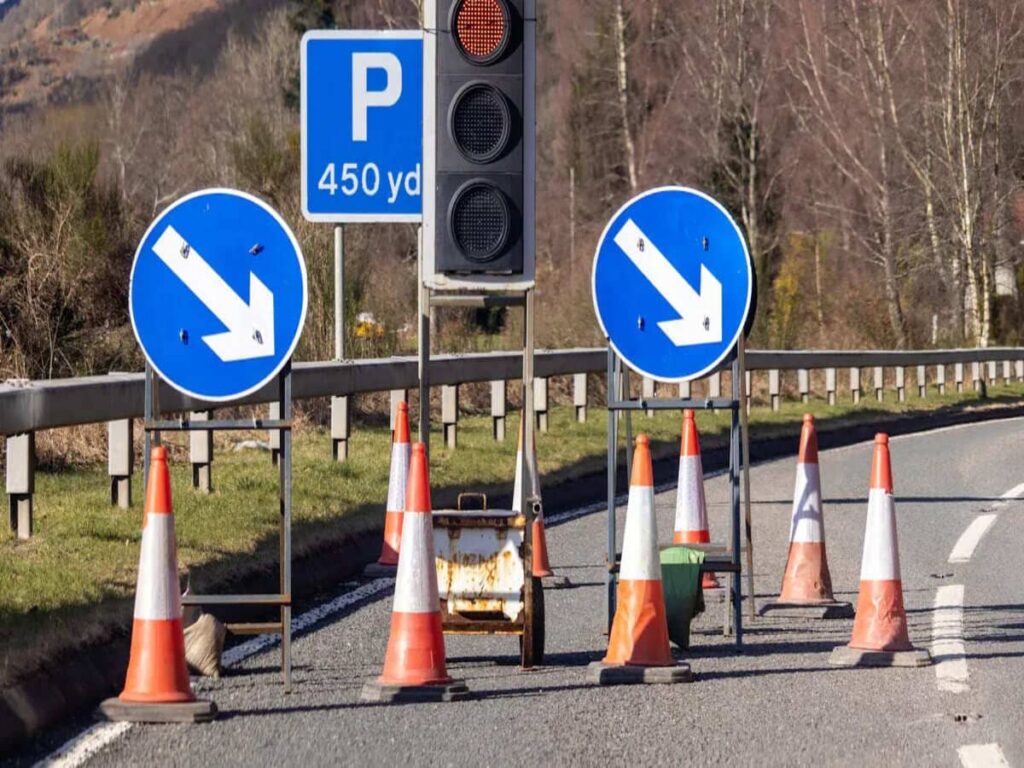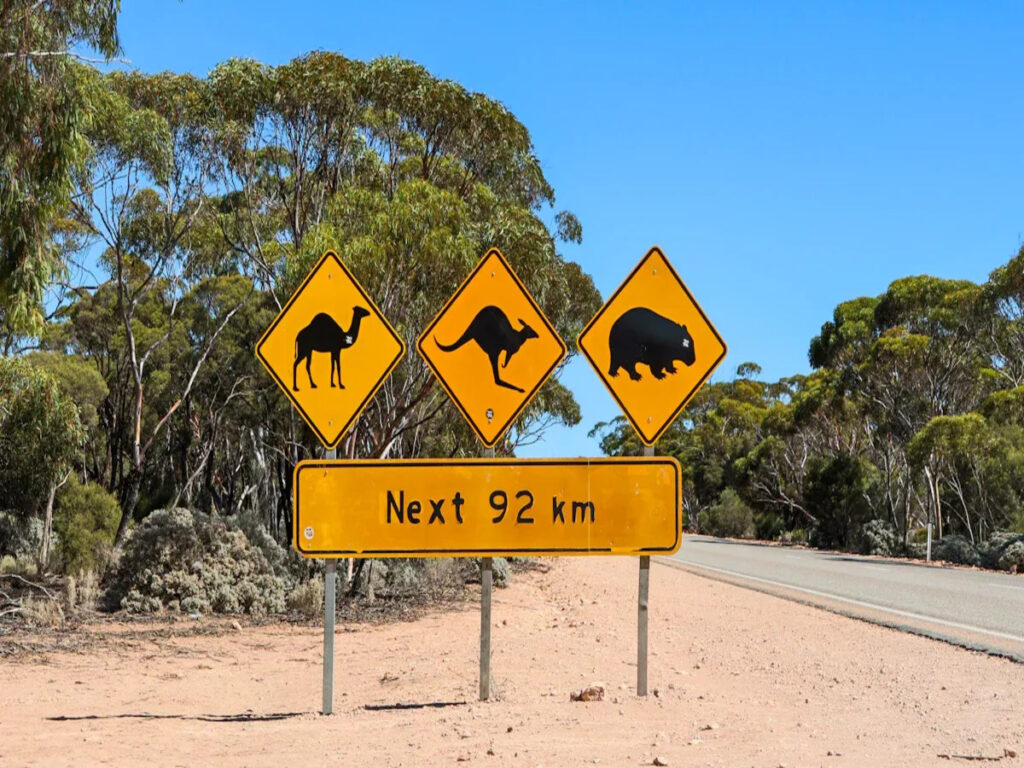
Вам необходимо понять Коды W-серии в AS 1742.2 обеспечение безопасности дорожного движения и соблюдения правил. КАК 1742.2 излагает стандарты для австралийских предупреждающих знаков, а также другие устройства регулирования дорожного движения. Если вы занимаетесь проектированием дорог, строительство, или управление дорожным движением, важно знать эти коды. В таблице ниже приведены основные группы кодов серии W для этих знаков.:
| Код W-серии | Тип опасности / Описание | Примеры / Примечания |
|---|---|---|
| W1 | Серия выравнивания | Резкие изгибы, извилистые дороги |
| W2 | Серия пересечений | Соединения, сливается |
| W3 | Предварительное предупреждение органов регулирования дорожного движения | Сигналы впереди |
| W4 | Ширина дороги, низкий и узкий клиренс | Узкие мосты, низкие зазоры |
| W5 | Серия дорожных препятствий | Животные, сельскохозяйственная техника |
| W6 | Пешеход, велосипед и школьная серия | Переезды, школьные зоны |
| W7 | Серия железнодорожных переездов | Железнодорожные переезды |
| W8 | Дополнительная серия пластин | Консультативная скорость, особые условия |
| W9 | Модифицированная серия пересечений | Сложные перекрестки |
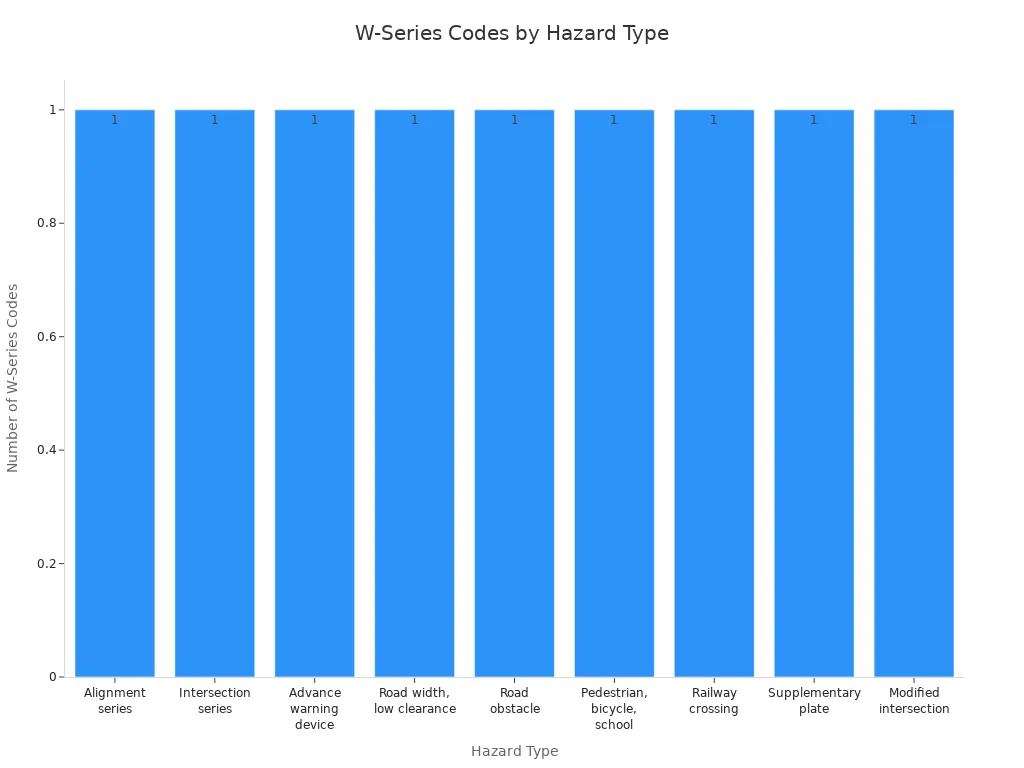
Эти Австралийские предупреждающие знаки и символы часто встречаются на дорогах по всей стране.. Научившись правильно их интерпретировать, вы сможете принимать обоснованные решения., выберите подходящие знаки, и способствовать поддержанию безопасной дорожной среды.
Ключевые выводы
- Коды W-серии в AS 1742.2 помочь людям узнать и четко разобраться в австралийских предупреждающих знаках об опасностях на дороге..
- Предупреждающие знаки использовать легко, стандартные изображения и цвета, чтобы люди могли быстро увидеть опасность, даже ночью или когда погода плохая.
- Всегда внимательно смотрите как на код серии W, так и на его изображение, чтобы выбрать правильный знак опасности и избежать путаницы..
- Используйте знаки серии W, соблюдая национальные и государственные правила, чтобы сообщать водителям об опасностях, таких как крутые повороты., узкие дороги, и железнодорожные переезды.
- Регулярные уроки и тщательная проверка кодов и изображений помогают избежать ошибок и сделать дороги безопасными для всех..
Австралийские предупреждающие знаки и AS 1742.2
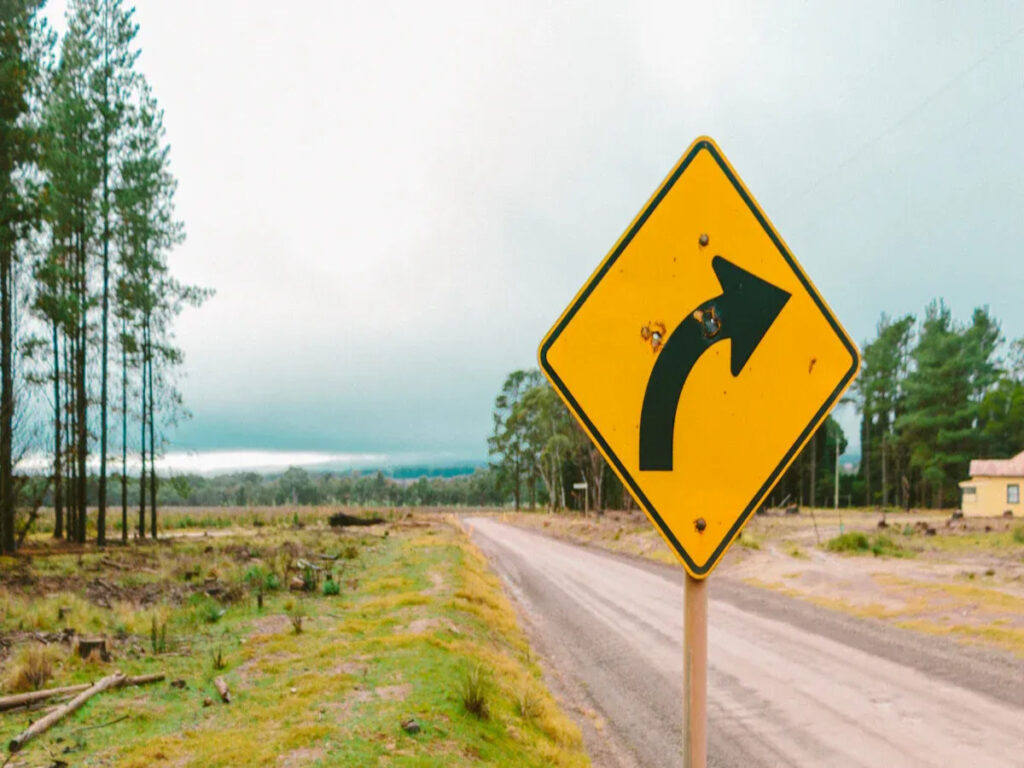
Что такое 1742.2?
Австралийские предупреждающие знаки должен соблюдать правила в Австралийский стандарт 1742. Этот документ является основным руководством по предупреждающим и дорожным знакам.. Это объясняет форму, цвет, символы, и коды для знаков. Этими правилами пользуются люди, работающие с дорожными знаками.. Это гарантирует, что каждый знак будет выглядеть и означать одно и то же повсюду в Австралии.. Когда знаки одинаковы, все быстро понимают опасность.
КАК 1742.2 расскажет, как спроектировать и разместить стандартные вывески. Вы используете его, чтобы проверить правильность предупреждающих знаков..
Назначение предупреждающих знаков
Предупреждающие знаки в Австралии предупреждают о предстоящих опасностях. Вы видите их перед крутыми поворотами, пересечения, или железнодорожные пути. Эти знаки дадут вам время среагировать и оставаться в безопасности. Люди, которые проектируют или строят дороги, используют знаки, помогающие водителям и защищающие рабочих.. Правила гарантируют, что каждый предупреждающий знак будет понятен.. Если вы правильно прочитали эти знаки, вы помогаете предотвратить аварии и сохранить дороги безопасными.
Эксперты по безопасности дорожного движения говорят, что использование одних и тех же знаков помогает снизить количество аварий. Когда советы и полиция используют одни и те же знаки и обмениваются информацией, водители лучше замечают опасности.
Единообразие и видимость
Австралийские предупреждающие знаки легко заметить по форме и цвету.. Они всегда имеют ромбовидную форму с желтым фоном и черными символами.. Это позволяет легко увидеть знаки издалека.. Желтый цвет выделяется при дневном свете и в плохую погоду.. Черные символы легко читаются.. В знаках используется светоотражающий материал, поэтому их видно ночью.. Размер символа остается прежним, Даже если знак больше. Это поможет вам узнать, какая опасность впереди.
- Ромбовидные формы помогут вам быстро обнаружить предупреждающие знаки.
- Желтый и черный цвета делают знаки легко видимыми..
- Светоотражающие знаки лучше ночью и под дождем.
- Тот же размер символов означает, что вы всегда знаете предупреждение.
- Единые правила использования знаков помогут вам увидеть опасности и оставаться в безопасности.
Исследования показывают, что водители быстрее видят четкие знаки. Например, водители электросамокатов с яркими цветами привлекают больше внимания, чем водители с тусклыми цветами. Это показывает, что ясно, яркие знаки могут помочь предотвратить аварии и сделать дороги безопасными.
Структура кода серии W
Формат кода
Вы заметите, что каждый предупреждающий знак серии W соответствует простому формату кода.. Каждый код начинается с буквы “W.”, что означает “Предупреждение”. После “W.”, ты видишь номер. Иногда, вы также можете найти суффикс, например тире и другая цифра или буква. Этот формат помогает быстро определить тип опасности и ее конкретные детали..
Например:
- W1: Этот код указывает на общее предупреждение о выравнивании дорог., например, крутая кривая.
- П4-2: Этот код относится к определенному знаку для “Конец переулка”.
Формат кода позволяет легко сопоставить правильные обозначения с нужной опасностью.. Вы можете использовать эту систему, чтобы гарантировать, что все знаки в вашем проекте подчиняются одним и тем же правилам.. Такой подход поддерживает четкую коммуникацию и обеспечивает безопасность участников дорожного движения..
Кончик: Всегда проверяйте суффикс в коде. Часто он сообщает вам больше о конкретной опасности или направлении ее воздействия..
Система нумерации
В системе нумерации серии W используется уникальный метод.. Вы увидите, что числа — это не просто подсчеты.. Вместо, они следуют системе, основанной на пороговых значениях и весах цифр.. Эта система гарантирует, что каждый код уникален и его легко классифицировать..
Вот как работает нумерация:
- Первая цифра начинается с установленного порога, обычно 1, и подходит к 9 или 35, в зависимости от диапазона.
- Каждая цифра имеет вес. Например, вес второй цифры 35, а вес третьей цифры равен 1190.
- Такие коды, как «a’ (0), 'ба’ (1), 'ока’ (2), до 9а’ (35) покажите, как система создает уникальные номера.
- Система использует нули в качестве разделителей., поэтому вы не увидите такие коды, как «ac’ или «ака».
- Этот метод позволяет без путаницы создавать множество уникальных кодов..
- Гибкость пороговых значений означает, что вы можете настроить систему для групп вывесок разного размера..
- Когда все пороговые значения установлены на 1, система соответствует биективной нумерации, где нули - это только отдельные цифры.
Эта система нумерации помогает вам систематизировать указатели по типам опасностей и гарантирует, что каждый знак будет иметь четкое место в общей классификации.. Вы можете использовать эту структуру, чтобы избежать ошибок и сохранить согласованность плана вывесок..
Общие коды
В своих проектах вы часто будете работать с определенными кодами серии W.. Эти правила охватывают наиболее распространенные опасности, которые можно встретить на австралийских дорогах.. Вот таблица, которая поможет вам понять некоторые из наиболее часто используемых кодов.:
| Код | Тип опасности | Типичный вариант использования |
|---|---|---|
| W1 | Выравнивание | Резкие изгибы, изгиб |
| П4-2 | Конец переулка | Сокращение полосы движения, слияние |
| W6 | Пешеходный переход | Школьные зоны, пересечения |
| W7 | Железнодорожный переезд | Поездные пути впереди |
| W10 | Дорожные работы | Строительные зоны |
Давайте посмотрим, как шаг за шагом можно расшифровать код серии W.. Возьмите W4-2 “Конец переулка” подпиши как пример:
- The “W.” говорит вам, что это предупреждающий знак.
- The “4” указывает на ширину дороги или группу дорожного просвета.
- The “-2” показывает конкретную опасность, в этом случае, конец полосы.
- В знаке используются две параллельные линии., с одним наклоном внутрь. Этот дизайн показывает, какая полоса заканчивается..
- Через некоторое время, дизайнеры добавили пунктирную линию, чтобы смысл был понятнее. Это изменение поможет вам и другим водителям быстрее понять знак..
Вы можете использовать этот пошаговый подход для любого кода W-Series.. Всегда проверяйте код, посмотрите на символ, и сопоставить его с опасностью. Этот метод гарантирует точность и простоту понимания ваших вывесок..
Примечание: Хороший дизайн указателей уменьшает путаницу и помогает всем оставаться в безопасности на дороге..
Интерпретация символов на знаках
Роль символов
Символы играют ключевую роль в предупреждающих знаках. Вы видите их почти на каждом знаке W-Series.. Эти символы помогут вам быстро распознать опасность., даже когда едешь на высокой скорости. Австралийский стандарт как 1742.2 использует символы больше, чем слова. Такой подход уменьшает путаницу и помогает быстро понять сообщение.. Вам не нужно читать длинный текст. Вместо, ты смотришь на форму и изображение. Этот метод подходит всем, включая международных водителей, которые могут не говорить по-английски.
Символы на знаках с желтыми ромбами выделяются. Вы замечаете их на расстоянии и вовремя реагируете, чтобы оставаться в безопасности..
Вы обнаружите, что стандартизированные символы облегчают распознавание знаков.. Такое единообразие способствует безопасности дорожного движения и гарантирует соблюдение правил дорожного движения..
Распространенные типы символов
На предупреждающих знаках вы заметите несколько типов символов.. Каждый тип использует определенную форму и цвет, чтобы показать свое значение.. В таблице ниже показаны наиболее распространенные типы символов и их значение.:
| Тип символа | Визуальные возможности | Цель | Представляемые опасности |
|---|---|---|---|
| Предупреждение | Желтый ромб с черной пиктограммой | Предупреждает вас об опасностях или опасностях | Резкие изгибы, скользкие дороги, мосты |
| Запрет | Красный круг с диагональной линией, черная пиктограмма | Говорит вам, чего вы не должны делать | Въезд запрещен, Нет разворота, зоны ограниченного доступа |
| Обязательный | Синий круг с белой пиктограммой | Показывает действия, которые вы должны предпринять | Держитесь левой стороны, использовать ремень безопасности, носить шлем |
| Чрезвычайная ситуация | Зеленый прямоугольник или квадрат с белой пиктограммой | Направляет вас к безопасным или запасным выходам | Первая помощь, пожарные выходы, аварийная сборка |
Например, изогнутая стрелка предупреждает о резком повороте. Человеческая фигура показывает пешеходный переход. Волнистые линии могут предупредить вас о скользкой дороге.. Две линии, расположенные близко друг к другу, могут означать, что впереди узкий мост..
Сопоставление символов с кодами
Вы сопоставляете каждый символ с кодом W-серии.. Этот шаг поможет вам выбрать правильный знак для каждой опасности.. Когда вы ищете определенный знак, вы смотрите и на код, и на символ. Код сообщает вам группу опасности.. Символ указывает точную опасность.
Ясные и простые символы важны. КАК 1742.2 дает правила дизайна символов. Вы должны использовать правильный размер, цвет, и расстояние. Благодаря этому знак легко увидеть и понять.. Хороший дизайн позволяет избежать беспорядка и сохраняет ясность сообщения.. Например, знак резкой кривой выделен жирным шрифтом, изогнутая стрелка с достаточным пространством вокруг нее. Это поможет вам быстро обнаружить предупреждение..
Всегда проверяйте, соответствует ли символ опасности.. Простой, стандартные символы уменьшают количество ошибок и помогают всем оставаться в безопасности.
Применение норм в дорожных проектах
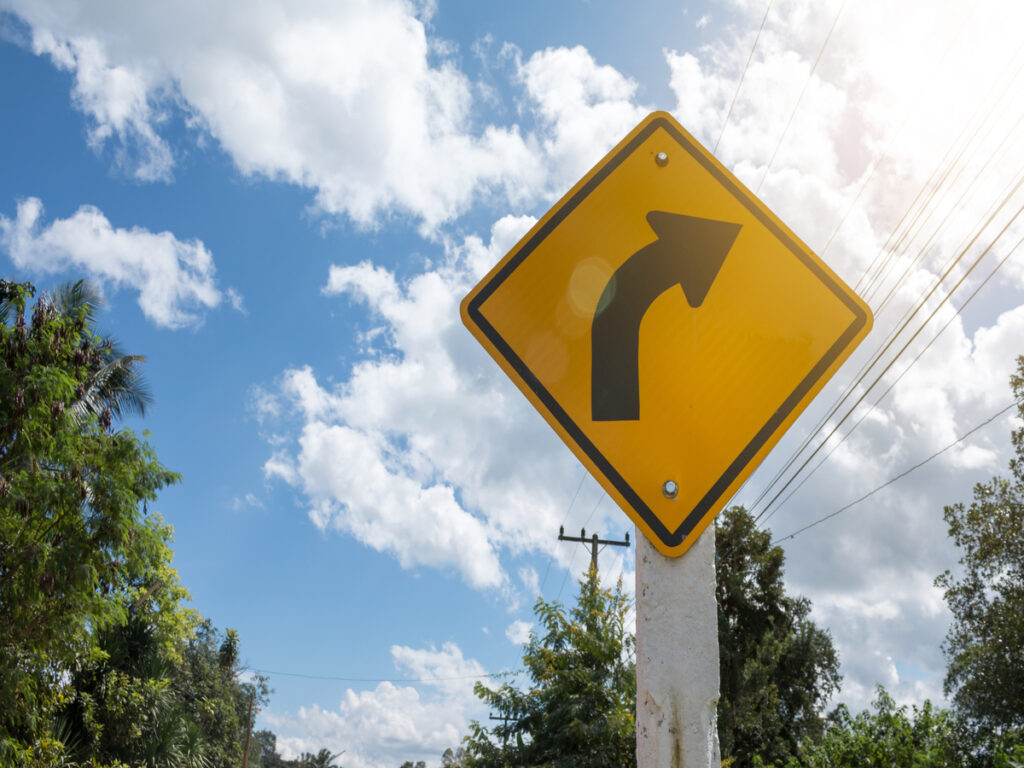
Когда использовать знаки серии W
Вы устанавливаете знаки серии W, чтобы предупреждать водителей об опасностях впереди.. Эти знаки помогают обезопасить людей на дорогах с крутыми поворотами., крутые холмы, узкие мосты, или Roadworks. Вы должны следовать правилам, чтобы знать, когда использовать каждый знак.. В таблице ниже показаны некоторые знаки серии W и случаи их использования.:
| Тип знака серии W | Критерии установки |
|---|---|
| Холм (W7-1) Знак | Поместите этот знак перед крутыми холмами или длинными склонами.. Используйте его, если холм круче, чем 5% или дольше, чем 300 ноги. |
| СУЖЕНИЕ ДОРОГИ (П5-1) Знак | Используйте этот знак, пока дорога не стала слишком узкой, чтобы две машины могли свободно разъехаться.. |
| УЗКИЙ МОСТ (П5-2) Знак | Поместите этот знак перед мостом, ширина которого меньше ширины дороги, или под мостом. 18 ноги в ширину. |
| Горизонтальное выравнивание (W1) | Используйте этот знак для резких поворотов или поворотов.. Добавьте табличку со скоростью, если исследования говорят, что водителям необходимо снижать скорость. |
Вам также следует просмотреть записи об авариях и то, что вы видите на дороге.. Если произошло много сбоев или промахов, тебе следует добавить больше знаков.
Практические сценарии
Вам часто придется использовать эти коды в реальной жизни.. Например, вы можете работать на дороге возле школы с крутым поворотом. Вы выбираете знак W1, чтобы предупредить водителей.. Вы добавляете табличку со скоростью, если тесты показывают, что водителям необходимо снизить скорость.. На другой работе, ты работаешь в строительной сфере. Для безопасного руководства водителями используются специальные знаки и дорожные устройства.. Знаки «ROAD NARROWS» размещаются перед сужающимися дорогами., в то время как знаки УЗКИЙ МОСТ расположены перед узкими мостами.. Территория всегда тщательно оценивается, полагаясь на суждение, чтобы выбрать наиболее подходящие знаки.
Кончик: Совместное использование знаков правил и предупреждающих знаков помогает водителям знать правила и замечать опасности..
Государственные вариации
Вы должны помнить, что в каждом штате Австралии дорожные знаки могут использоваться немного по-разному.. В некоторых штатах добавляются дополнительные указатели или меняют расположение знаков для местных нужд.. Прежде чем устанавливать знаки с правилами, всегда следует читать правила дорожного движения вашего штата.. Это гарантирует, что вы соблюдаете все правила и ваш проект верен..
Примечание: Вы обеспечиваете безопасность и законность своего дорожного проекта, соблюдая как национальные правила, так и специальные правила вашего штата..
Распространенные ошибки при использовании дорожных знаков
Неправильное прочтение кодов
Иногда люди неправильно читают коды серии W, если спешат.. Это может произойти, когда они не присматриваются к деталям.. Коды типа W1 и W2 легко перепутать.. Каждый код означает различную опасность. Если вы используете неправильный код, ты можешь поставить неправильный знак на дороге. Водители могут запутаться, и могут произойти аварии. Всегда смотрите на префикс кода, число, и любая дополнительная часть. Сравните код с планами вашего проекта, прежде чем устанавливать вывеску..
Кончик: Всегда проверяйте код и суффикс, когда ищете австралийские предупреждающие знаки.. Это поможет вам избежать дорогостоящих ошибок..
Неправильное использование символов
Использование неправильного символа может усложнить жизнь водителям.. Если вы выбрали неправильный символ, люди могут не знать, какая опасность впереди. Например, Пешеходный знак, обозначающий скользкую дорогу, сбивает водителей с толку. Вы должны сопоставить символ с опасностью, указанной в коде.. Символы должны быть ясными и простыми. Они должны следовать правилам AS. 1742.2. Если символ слишком подробный или нестандартный, Водители могут не видеть предупреждение вовремя.
| Тип ошибки | Пример | Воздействие на безопасность |
|---|---|---|
| Выбран неправильный символ | Пешеход на скользкой дороге | Путаница, несчастные случаи |
| Символ слишком сложный | Слишком детализированное изображение | Медленное распознавание |
| Нестандартный символ | Неутвержденный дизайн | Неверное толкование |
Советы по точности
Вы можете быть более точными, используя хорошие привычки:
- Используйте стандартные свинцовые листы для проверки сокращений и номеров тегов.. Это поможет вам узнать типы устройств и их функции..
- Узнайте, где находятся устройства, прочитав маркировку символов.. Горизонтальные линии внутри символов показывают, находится ли устройство на главной панели или где-то еще..
- Узнайте, что означают символы, прочитав слова внутри них.. Верхняя строка показывает, что делает символ.. Суть связана с оборудованием.
- Посмотрите подтверждающие документы, например, описания функциональных элементов управления, для жестких символов.
- Держите свои листы заявок в чистоте и обновлении. Это облегчает быстрый поиск символов и тегов..
- Обратите внимание на особенности символов, как состояния отказа клапана, которые дают важную информацию.
- Научите работников читать и понимать знаки перед тем, как они приступят к работе..
Примечание: Тщательная проверка и регулярное обучение помогут вам избежать ошибок и обеспечить безопасность всех на дорогах..
Вы можете определить коды серии W, посмотрев на код.. Затем, сопоставьте символ с опасностью, которую вы видите. Хорошие австралийские предупреждающие знаки помогают сделать дороги безопасными для всех. Они также следят за тем, чтобы вы соблюдали все правила.. Когда вы ищете знак, используйте контрольный список, чтобы не допускать ошибок. Четкие знаки помогут вам хорошо выполнять свою работу и обеспечивать безопасность людей.. Если дела идут сложно, обратитесь за помощью к эксперту по вывескам или обратитесь к руководству.
Часто задаваемые вопросы
Как узнать, какой знак серии W использовать для обозначения опасности??
Сначала вы проверяете тип опасности. Затем вы сопоставляете его с правильным кодом серии W.. Если вы ищете определенный знак, используйте код и символ вместе, чтобы убедиться, что вы выбрали правильный вариант.
Почему в предупреждающих знаках вместо слов используются символы?
Символы помогают быстро понять сообщение.. Вам не нужно читать длинный текст. Это облегчает для всех, включая людей, которые не говорят по-английски.
Что делать, если вы видите поврежденный предупреждающий знак?
Вы сообщаете о поврежденном знаке в местный совет или дорожную службу.. Быстрые действия помогают обеспечить безопасность дорог для всех водителей и пешеходов.
Могут ли штаты использовать разные австралийские предупреждающие знаки?
Штаты могут добавлять дополнительные указатели или менять расположение знаков в соответствии с местными потребностями.. Прежде чем устанавливать знаки, всегда следует проверять правила дорожного движения вашего штата..
Как избежать ошибок при установке предупреждающих знаков?
Вы внимательно читаете код и символ. Вы проверяете свои планы и используете контрольный список. Обучение поможет вам и вашей команде избежать ошибок и обеспечить безопасность дорог..

